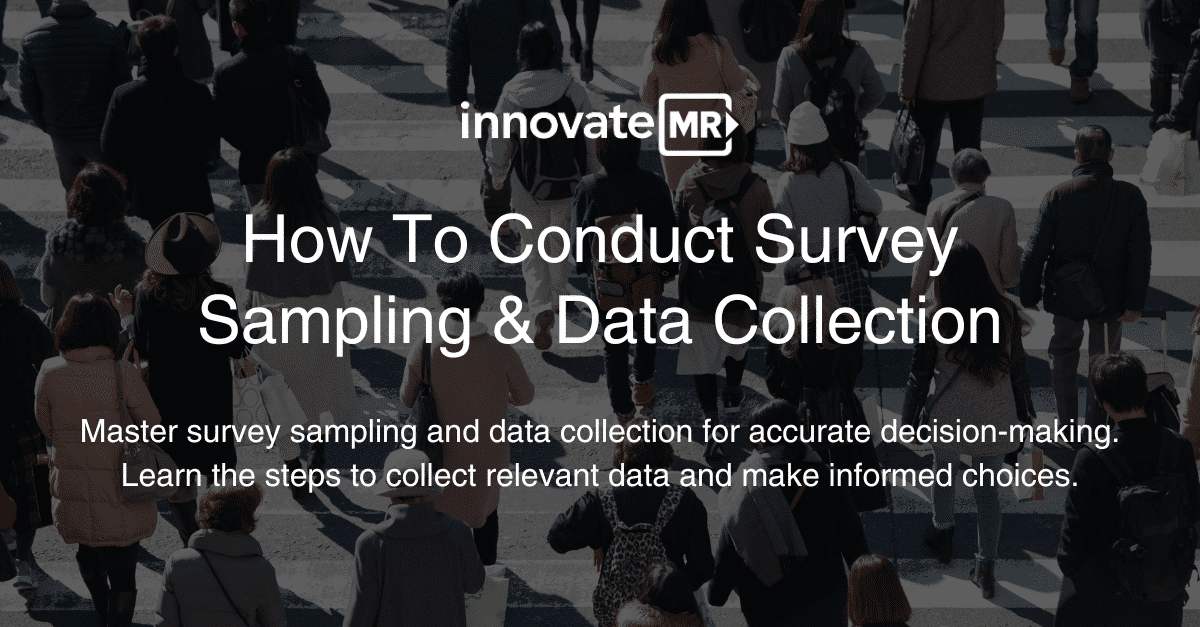
In today’s on-demand world, data is the foundation of decision-making. It is used to understand customer preferences, market trends, and to inform the direction of an entire organization. In order to collect accurate and relevant data, successful survey sampling and data collection play a vital role. Survey sampling is the process of selecting a representative sample from a larger population (such as a product’s target audience), and data collection is the process of gathering and recording information from the selected sample.
Here are some steps to conduct survey sampling and data collection:
1. Define the objectives of the survey:
The first step is to define the objectives of the survey including the target population, the information that needs to be collected, the type of survey that will be conducted, and the method of data collection. Defining the objectives will help in selecting an appropriate sample size and survey method.
2. Choose a sampling method:
There are several methods of survey sampling and data collection, including random sampling, stratified sampling, and cluster sampling. Random sampling is the most commonly used method, where each member of the population has an equal chance of being selected. Stratified sampling involves dividing the population into subgroups and then selecting members from each subgroup. Cluster sampling involves selecting a group of members from the population based on geographic location, age, or other factors. The choice of sampling method will depend on the size of the population, the nature of the research question, and the available resources. Deciding whether to use qualitative, quantitative, or mixed research methods depends on the research question, the type of data needed, and the research objectives.
3. Decide on Qualitative, Quantitative, or Mixed Method:
Qualitative research is often used when the goal is to explore complex, subjective phenomena or to generate new hypotheses, while quantitative research is used to test hypotheses and generalize based on numerical data. In some cases, a combination of both methods, known as mixed-method research, can provide a more complete understanding of a phenomenon by combining the strengths of both approaches. Mixed-method research involves both qualitative and quantitative survey sampling and data collection and analyzing it in a complementary way, allowing researchers to gain a more comprehensive understanding of the research question. Ultimately, the choice of which method or combination of methods to use will depend again on the specific research question and objectives.

4. Determine the sample size:
The sample size is the number of individuals who will be selected from the population for the survey. The sample size will depend on the size of the population, the level of precision required, and the desired level of confidence. A larger sample size will always provide more accurate results, but it will also increase the cost and time required for data collection. At least 300 participants is the typical recommendation for a single research project.
5. Develop a survey questionnaire:
The survey questionnaire is the tool used to collect data from the selected sample. A questionnaire is most commonly a list of questions with descriptions about how the survey is meant to behave, most commonly in a plain text or word document. It should be designed to collect relevant and accurate information in a clear and concise manner. The questionnaire should be pre-tested with a small group of individuals to ensure that it is easy to understand and produces reliable results. From there, survey programmers come in. Survey programming is when a team of programmers transform a word document containing survey questions into an interactive survey that can be completed by participants. This is similar to the process of building a website from wireframes, where programmers take static designs and create the interactable site, considering user experience (UX) and user interface (UI) design principles.
6. Conduct the survey:
The survey can be conducted through various methods such as face-to-face interviews, telephone interviews, online surveys, or even mail surveys. The chosen method will depend on the nature of the research question, the target population, and the available resources. Face-to-face interviews are the most effective method of data collection, but they are also the most expensive and time-consuming. Online surveys are cost-effective and easy to administer, but they may have lower response rates.

7. Analyze the data:
Once the survey is completed, the data needs to be analyzed and interpreted. The analysis will involve organizing, summarizing, and presenting the data in a meaningful way that tells an actionable story. This will help in identifying patterns, trends, and relationships in the data that could impact business, product, or marketing objectives. There are several statistical tools and techniques that can be used to analyze survey data such as frequency distributions, cross-tabulations, and regression analysis.
8. Draw conclusions:
The final step is to draw conclusions from the data. The conclusions should be based on the analysis of the survey sampling and data collection and should be relevant to the objectives of the survey. The conclusions should be presented in a clear and concise manner and should include recommendations for future research or action. It is also essential to consider potential biases and limitations of the survey data, such as nonresponse bias or sampling bias. Once the data is analyzed and interpreted, researchers can draw conclusions and make recommendations based on the findings. These conclusions can inform business strategies and guide decision-making related to product development, marketing, and other aspects of the business.
In conclusion, survey sampling and data collection are critical steps in the research process. They provide the foundation for collecting accurate and relevant data that can be used to make informed business decisions. By following these steps, you can ensure that your survey is conducted effectively, and the data collected is accurate and relevant.
About InnovateMR – InnovateMR is a full-service sampling and ResTech company that delivers faster, quality insights from business and consumer audiences utilizing cutting-edge technologies to support agile research. As industry pioneers, InnovateMR provides world-class end-to-end survey programming, targeted international sampling, qualitative and quantitative insights, and customized consultation services to support informed, data-driven strategies, and identify growth opportunities. Known for their celebrated status in customer service and results, InnovateMR combines boutique-level service with extensive global reach to achieve partner success.


